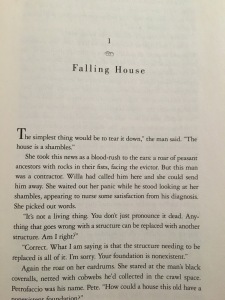
Orientation might seem like yesterday, but you’d better believe it: semester one exams are just around the corner. And there’s no time like the present to start studying for them. Getting onto your study now means there will be a lot less pressure later on - and much less cramming the night before. If you want to kick off studying early, here are a few ways you can get started.
LEARN ABOUT YOUR EXAMS
The best way to prepare for an exam is to find out exactly what you’re expected to know. Ask your lecturer or tutor about the exam, and they can hopefully point you in the right direction.
Getting familiar with the type of exam you’ll be sitting, or what kind of questions are going to be in it, can help you prepare more efficiently and effectively. By knowing what you’ll likely be tested on, you can focus solely on that topic or skill-set. After all, there’s no point preparing for a question or topic that isn’t going to be in the final test!
MAKE A STUDY PLAN
Once you’ve got an idea of what you need to prepare for, it’s time to make a study plan. Study plans are great frameworks for shaping your study over the next few weeks, as they can help you visualise what you need to study. You’ll also be able to organise the content into manageable sections. We recommend creating a calendar that outlines the days between now and your exams, which you can fill in according to your priorities.
When creating your study plan, make sure you space your study out over the coming weeks. It’s a good idea to study a little every day, so you don’t end up having to study everything in the days before the exam. And make sure to be specific with your plan; writing down that you’re going to study history for two hours can lead to mindless reading and procrastination. Instead, focus on a specific chapter or topic. That way, you’ll know exactly what you’ll be spending your time on.
It’s worth keeping in mind that your study plan isn’t just for organising revision. Make sure to schedule regular breaks, as studying for long periods of time isn’t healthy for your mind or body. Taking some time off during the day and allowing yourself to relax will help maintain balance and make your study sessions more effective. It’s also wise to put aside a day each week for catching up on any study you’ve missed, or to spend a day completely away from the books.
REVIEW YOUR NOTES
Your lecture or tutorial notes are a great place to start studying, and how you review them depends on how you like to study. If you’re a visual learner, highlighting your notes, writing summaries, or turning them into flashcards might help you remember better. If you learn better by listening, you can play lectures through your headphones, or record notes on your phone to listen to later. If you’re more likely to recall information through movement and hands-on activity, or if your course lends itself to this type of learning, you could explain or demonstrate key concepts to family and friends.
PRACTISE, PRACTISE, PRACTISE
Doing past tests and practice essays is the closest you’ll get to real exam conditions. Past exam papers can indicate the types of questions the exam might contain, as well as how the exam could be structured. Practice essays not only improve your writing and ability to answer a prompt, but they can also help you to better manage your time. Ask your lecturer or tutor if they can give you access to any past exam papers, or check the library. If none are available, why not try writing your own based on your notes?
When it comes to practice tests and essays, it’s important to place yourself under exam conditions. Make sure you stick to the correct time limit, take away any distractions, and avoid looking at your notes. After you’ve completed the practice test, see if your tutor can mark it for you or offer any feedback.
ASK FOR HELP
Ask your lecturers or tutors for help with any gaps in your knowledge, or if you’re feeling a bit unsure about your upcoming exam. They may be able to direct you to past tests, extra exercises, or other materials that can help with your revision. Your university library might also run study sessions, or offer study help online.
Reaching out to family and friends is also a good idea during exam time, as they can help you with your revision or act as a comforting presence during a particularly stressful period. Although only you can sit the exam, you don’t have to prepare alone; there will be plenty of people willing to help you if you need to reach out.






